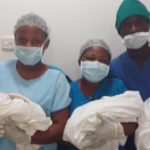In vitro fertilization is a process by which an embryo is produced by fertilizing an egg outside the body. The process involves stimulating a woman’s ovaries to release eggs, collecting the eggs from the woman’s body, and allowing the sperm to fertilize the eggs in a fluid. The fertilized egg is cultured in a growth medium and implanted in a woman’s uterus with the aim of establishing a successful pregnancy.
Prior to the retrieval procedure, you will be given injections of a medication that ripens the developing eggs and starts the process of ovulation. Your doctor may do blood tests or an ultrasound to be sure the eggs are at the right stage of development before retrieving them. The IVF facility will provide you with special instructions to follow the night before and the day of the procedure. Most women are given pain medication and the choice of being mildly sedated or going under full anesthesia. Immediately following the retrieval, your eggs will be mixed in the laboratory with your partner’s sperm.Continue reading below… Once the embryos are ready, you will return to the IVF facility so doctors can transfer one or more into your uterus.
IVF may be helpful if you are diagnosed with one of the following: Endometriosis, Low sperm count, Problems with the uterus or fallopian tubes, Problems with ovulation, Antibody problems that harm sperm or eggs, inability of sperm to penetrate or survive in the cervical mucus, or an unexplained fertility problem.
Considering our enviable success rates with IVF, you can decide to be part of the countless success stories we have every month. For specific information concerning our IVF services, kindly contact us and we will be more than glad to offer you the very best advice.







